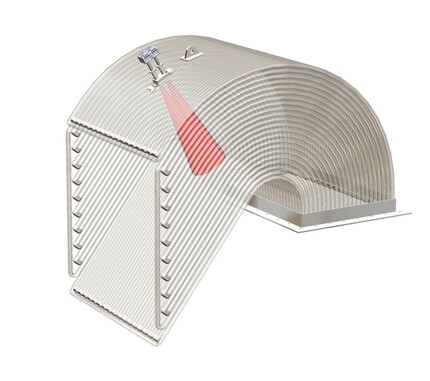
At AISTech/Metec in mid-June in Düsseldorf, Promecon will present the McON-IR system for rapid in-situ measurement of the composition and quantity of exhaust gas from electric arc furnaces. With the measured values, the chemical energy in the exhaust gas can be better utilized and the thermal exhaust gas losses can be minimized. They also reduce the kiln’s energy requirements, enabling optimization of the process as a whole.

© Promecon
Until now, the measurement of exhaust gas from electric arc furnaces was associated with intrusive sensors or extractive measurements in the exhaust gas duct, which provided the measured values only with a delay or caused high maintenance effort. In contrast, the new McON-IR sensors operate on an infrared basis and do not require lances that protrude into the exhaust duct. They measure the chemical composition as well as the temperature and velocity of the exhaust gas flow directly at the exhaust manifold.
The system’s infrared detector captures a large portion of the cross-section of the exhaust duct. The sensor measures the active infrared emission of the individual gas molecules and uses this to determine the concentration of gases such as carbon monoxide, carbon dioxide and methane. It also detects water in the exhaust gas stream – an aspect that is playing an increasingly important role in safety at the melting furnace. A second pair of sensors measures the flow velocity and temperature of the exhaust gas.
The sensors are installed immediately after the ventilation slot on the manifold – very close to the furnace. Since no components protrude into the cross-section of the pipe, installation between the water-cooled piping is very simple. The optics are purged with nitrogen, and the sensor electronics are cooled. The protected cable routing and additional flame protection help the sensors achieve service lives of up to twelve months. Also due to the low maintenance requirements, the new sensors have a significantly higher availability compared to other intrusive systems.

© Promecon
Hans Georg Conrads, Managing Director at Promecon, sees the new system as having great potential for minimizing the energy requirements of electric arc furnaces: “The new McON-IR sensors work so fast that the measurement results can be used for real-time control of the furnace, for example for the oxygen lances or the gas burners.”
Web:
www.promecon.com
